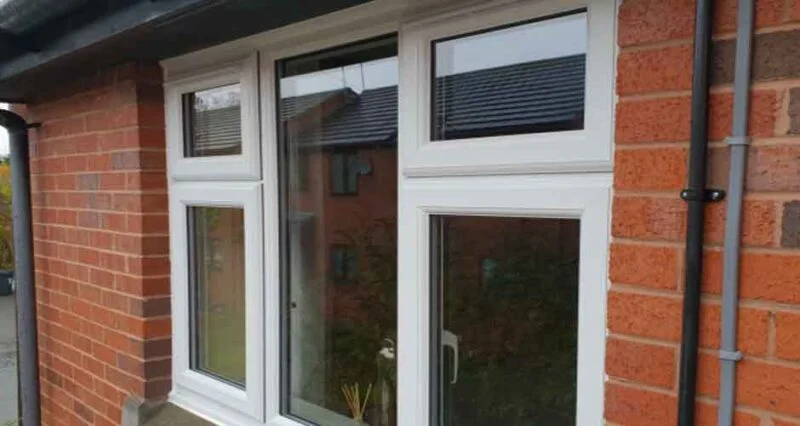
Choosing the right window styles for Bradford’s diverse architectural landscape involves a thoughtful understanding of its historical context, architectural significance, and the overall aesthetic of its buildings. Bradford, known for its rich industrial history and Victorian-era landmarks, displays a wide range of architectural styles, from Gothic Revival to modern designs. In this context, DM Windows Bradford offers a variety of window options that cater to this architectural diversity. This guide will delve into the essential considerations for selecting window styles that both align with and accentuate Bradford’s architectural heritage.
Selecting Appropriate Window Styles
Matching Architectural Styles
Choosing the right window style is key to complementing Bradford’s varied architecture. For Victorian buildings, traditional sash windows with glazing bars can be ideal, whereas Edwardian homes may be better suited to bay windows that provide a sense of grandeur. Contemporary buildings might benefit from minimalist window designs with larger glass panes and sleek frames, reflecting modern aesthetics.
Material and Design Considerations
The materials and design details of windows should align with the architectural style. Wooden frames may be more appropriate for older buildings to maintain authenticity, while uPVC or aluminum frames could suit modern constructions. The color and design of window frames, including any decorative elements like stained glass, should also be considered to ensure they complement the building’s exterior.
Practical Aspects and Compliance
Energy Efficiency and Sustainability
Modern window technology offers the opportunity to enhance energy efficiency without compromising on style. Double or triple glazing, along with well-fitted frames, can significantly improve insulation, reducing energy costs and benefiting the environment. This aspect is especially important in Bradford’s colder climate and contributes to sustainable living in the city.
Regulations and Permissions
When altering or installing new windows in Bradford, especially in historic buildings or conservation areas, it’s crucial to be aware of local building regulations and conservation laws. Seeking appropriate permissions is vital to avoid legal issues and ensure that renovations respect the city’s heritage. Consulting with local authorities or heritage experts can provide valuable guidance in this process.
Selecting the Right Material
Wood: A Timeless Classic
Wooden windows are a classic choice that complement traditional Bradford buildings. Their natural texture and warmth can enhance the aesthetic of Victorian and Edwardian homes. Besides their beauty, wooden windows offer the flexibility of being painted or stained to suit various architectural styles.
uPVC: Modern Efficiency
uPVC windows, known for their durability and low maintenance, are a practical choice for modern structures. They offer excellent thermal insulation and soundproofing qualities, making them ideal for urban settings. uPVC windows come in various finishes, including ones that mimic wood, providing a contemporary look without compromising the building’s historical integrity.
Aluminium: Sleek and Contemporary
For newer, more modern structures, aluminium windows are a suitable choice. Their slim frames and sleek design complement contemporary architectural styles. Aluminium is also known for its strength, durability, and low maintenance, making it a practical option for busy urban environments.
Energy Efficiency and Conservation Considerations
Double Glazing: A Standard in Insulation
Double-glazed windows are almost a standard now, providing excellent insulation by trapping air between two panes of glass. This feature significantly reduces heat loss, keeping homes warmer in the winter and cooler in the summer.
Low-Emissivity (Low-E) Glass: Advanced Thermal Efficiency
Low-E glass, with its microscopically thin coating, reflects heat back into the room, further enhancing thermal efficiency. It’s particularly beneficial in conserving heat within older buildings, where preserving the original architecture is crucial.
Window Placement for Maximum Energy Efficiency
The placement of windows plays a vital role in energy conservation. South-facing windows can capture maximum sunlight, reducing the need for artificial heating. Strategic placement can thus contribute significantly to a building’s overall energy efficiency.
Balancing Aesthetics and Functionality in Window Design
Consider Window Operation
The way a window operates can impact both the look and functionality of a building. Traditional sash windows, for instance, are ideal for Victorian homes but might not suit a modern office building where tilt-and-turn windows could offer better ventilation and ease of cleaning.
Proportion and Scale
Respecting the proportion and scale of the original architecture is crucial. Large, floor-to-ceiling windows might suit contemporary buildings but could look out of place in a quaint Victorian cottage. Similarly, small, decorative windows could diminish the sleek appeal of a modern façade.
Colour and Finish
The colour and finish of windows play a significant role in complementing a building’s exterior. For historical buildings, classic finishes like white, black, or natural wood can enhance authenticity, while modern structures might benefit from bolder, more unconventional colours.
Integration with Interior Design
Maximising Natural Light
In residential spaces, maximising natural light can create an inviting, warm atmosphere. Large windows or skylights are excellent for brightening up living spaces, particularly in densely built areas of Bradford.
Privacy Considerations
For windows facing busy streets or neighbouring properties, privacy is a key concern. Frosted glass, window films, or strategically placed windows can provide privacy without sacrificing natural light.
Complementing Interior Themes
Enhancing Architectural Character with Customisation
Customising windows can significantly elevate the architectural character of Bradford’s buildings. Personalised design elements can turn windows from mere functional features into standout architectural highlights.
Bespoke Design Elements
Incorporating bespoke design elements like stained glass, custom grilles, or unique shapes can add a distinctive charm to both historical and modern properties.
Preservation and Restoration
The integrity of Bradford’s architectural heritage lies in the details. When restoring or preserving buildings, it’s essential to consider how window styles contribute to the overall authenticity. This involves not only replicating historical designs but also using materials and techniques that match the period. Careful consideration ensures that the architectural legacy of Bradford is maintained for future generations.
In conclusion, choosing the right window style for Bradford’s diverse architecture requires a careful consideration of several factors. From balancing aesthetics with functionality, integrating with interior design, to customising for character, each choice contributes to the unique tapestry that makes up the city’s architectural identity. Whether you’re refurbishing a historic gem or bringing a modern touch to the skyline, understanding and respecting Bradford’s architectural heritage is key to making informed, impactful window style decisions.

